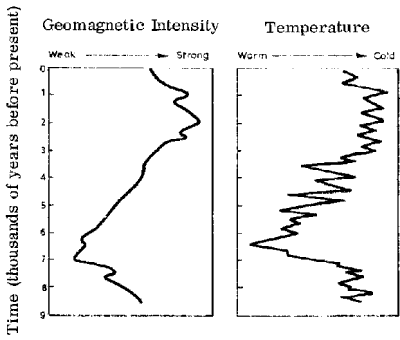 |
Science Frontiers ONLINE No. 50: Mar-Apr 1987 |
|
|
Magnetic Precursors Of Large Storms
On January 22, 1986, a magnetometer at the Fredricksburg Magnetic Observatory, in Virginia, recorded a sudden jump (of 45 gammas) in the earth's horizontal magnetic field component. Alerted to this, G. Wollin, at the Lamont-Doherty Geological Observatory, immediately predicted that a major snowstorm or flooding rains would hit northeastern states within six days. Wollin contacted the weather people in the region, but they discounted the prediction because satellite pictures and conventional weather indicators implied nothing of the sort. A three-day storm began on January 25, depositing 3 feet of snow in northern New England and 4 inches of rain along the coast from Washington to Boston. Wollin has had similar successes, without even looking at a weather map!
Obviously, Wollin's forecasting techniques are not yet part of the Weather Bureau's arsenal. This is not too surprising because even Wollin does not understand why major storms should be preceded by several days by nervous magnetometers. He talks in a tentative way about solar storms, which do affect terrestrial magnetism, dumping energy into the oceans and thence into the atmosphere. But this is mainly speculation. Historically, we do know that long-term changes in the earth's magnetic field are linked to global temperature levels (see graphs); but here, too, cause and effect are not obvious.
(Gribbin, John; "Magnetic Pointers to Stormy Weather," New Scientist, p. 70, December 25, 1986.)
 | Long-term changes in global temperature follow changes in geomagnetic intensity. |